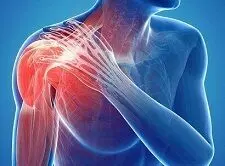JESS acceptable treatment option for fixation of proximal humeral fractures in geriatric patients: study
- byDoctor News Daily Team
- 03 November, 2025
- 0 Comments
- 0 Mins

There has been an increased interest in the external and percutaneous fixation of proximal humerus fractures. Numerous advantages of external fixation like less blood loss, ease of application, and rigid fixation provide a promising new avenue for the management of humeral fractures. A retrospective case series by Siddhartha Sinha et al assessed the radiological and functional outcome of proximal humerus fractures treated with the Joshi External Stabilization system (JESS). The records of patients more than 18 years of age with proximal humerus fractures who were operated with the JESS fixator were reviewed and a proforma based on each follow-up was filled by the investigators. The key findings of the study were: • A total of 28 patients met the inclusion criteria with an average age of 65.17 ± 13.1 years. • The average age of the study group was 65.17 ± 13.1 years (range 22–82 years). • 60.7%, (n = 17) were males and 39.3% (n = 11) were females, the right side was more injured (71.4%, n = 20) than the left side (28.6%, n = 8). • The most common mode of injury was from fall on level ground (39.3%, n = 11) followed by road traffic accidents (28.6%, n = 8) other modes of injury were also noted. • Most of the patients were right dominant (75%, n = 21). • Neers type 3 injuries were most common (38.3%, n = 11). • All fractures united on 6-week follow-up. • 75% (n = 21) reported good 25% (n = 7) excellent Constant scores at 24 weeks. • The overall complication rate was 28.6%. Common complications were superficial pin tract infections and fixator loosening. The authors concluded – “The Joshi External Stabilization System is an acceptable treatment option for orthopaedic surgeons for the fixation of proximal humeral fractures especially in geriatric patients. Like other external fixation devices, pin tract infection and pin loosening are inherent to the system but can be prevented by regular pin care and teaching the patient.” Further reading: Radiological and Functional Outcomes of Joshi External Stabilization System (JESS) in Proximal Humerus Fractures: A Retrospective Review Siddhartha Sinha et al Indian Journal of Orthopaedics (2025) 59:611–619 https://doi.org/10.1007/s43465-025-01374-w
Disclaimer: This website is designed for healthcare professionals and serves solely for informational purposes.
The content provided should not be interpreted as medical advice, diagnosis, treatment recommendations, prescriptions, or endorsements of specific medical practices. It is not a replacement for professional medical consultation or the expertise of a licensed healthcare provider.
Given the ever-evolving nature of medical science, we strive to keep our information accurate and up to date. However, we do not guarantee the completeness or accuracy of the content.
If you come across any inconsistencies, please reach out to us at
admin@doctornewsdaily.com.
We do not support or endorse medical opinions, treatments, or recommendations that contradict the advice of qualified healthcare professionals.
By using this website, you agree to our
Terms of Use,
Privacy Policy, and
Advertisement Policy.
For further details, please review our
Full Disclaimer.
Recent News
Gum disease could silently cause serious brain dam...
- 03 November, 2025
Can Early-Day Fasting Significantly Boost Metaboli...
- 03 November, 2025
Delhi HC bars doctor from running medical centre d...
- 03 November, 2025
Daily Newsletter
Get all the top stories from Blogs to keep track.


0 Comments
Post a comment
No comments yet. Be the first to comment!